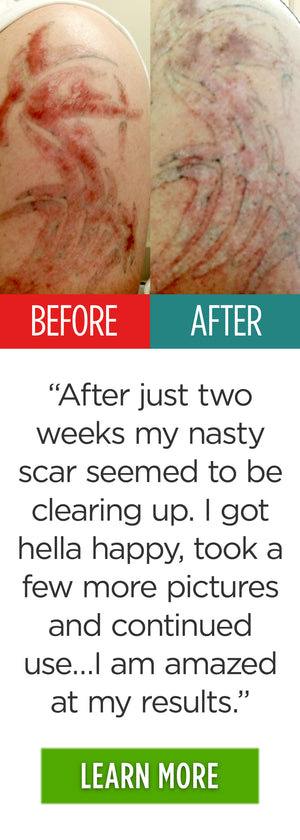The Minute-By-Minute, Day-By-Day Life of a Scar
Posted on 21 January 2016 by Maryanne Johnson
Share this post
When something happens that leaves us with damaged skin – a cut from a rock we bumped into while hiking a waterfall, road rash from a tumble off a bike, a gouge in an arm experienced when the dog sees a squirrel, bird or rabbit and decides to give chase, never mind that you’re on the other end of the leash – our first instinct is probably to unleash a few choice words on the subject.
That’s likely especially true of athletes who have just recovered from their last scar when their latest incident earned the new one, although in their older years they can point out their Tour de France, Super Bowl or World Series scars to their grandchildren with some serious warrior pride.
But after the swearing, screaming – or in some cases, the crying – is over, what happens to your precious, tender skin?
Scar Regeneration: Part 1
As soon as you cut yourself, your body goes into immediate action, releasing a flood of chemicals that begin the healing process.
Blood vessels narrow to slow the release of blood, while the blood that is flowing out of the wound sends platelets so the wound begins to clot and close. New skin cells form to create a web-like protective barrier over the wound, effectively sealing it against bacteria that can cause infection.
The barrier also helps retain the moisture necessary to help cells go to work healing the damaged areas. Moisture is vital, because cells cannot repair damaged skin in a dry environment. That means that old information about letting a wound scab over is a bit of rubbish.
When a wound forms a scab, it is because it has dried out, and the cells have to work harder to repair the injury.
Scar Regeneration: Part 2
After the wound is closed, the inflammation phase begins, and blood cells that narrowed now open to allow essential oxygen to reach the wound.
At the same time, white blood cells called macrophages turn up to clear the wound of any dirt or debris that can lead to infection, much like a maid service tending to a hotel room where the guests partied just a little too hard.
This stage lasts about two to five days, depending on the depth and seriousness of the wound.
Scar Regeneration: Part 3
At this point the tissue repair process begins, and both white and red blood cells get in on the act. The two team up to help repair the wound, creating collagen which acts as a base for new surface skin cells.
At this point, your skin is beginning the remodeling process, like a house that experienced damage from a storm or kitchen fire. New skin will begin to form over the wound that has now filled in, and the wound becomes smaller and less noticeable.
Now, because the wound is becoming stronger as it knits together, much like a broken bone, it will lose any scab that has formed, revealing the new skin beneath.
That new skin is often red and shiny with a propensity for itching. While the replacement skin is not as strong as the original – experts say a scar is about 70 percent as strong as your original skin – it can, if treated properly, take on the same appearance as your original skin over time.
Scar Regeneration: Part 4
In the same way moisture helps a wound heal more quickly, moisture also helps treat scar tissue, so making sure that your damaged skin is hydrated is one of the best ways to ensure that it will be less likely to scar.
Most experts say products with silicone – which seal in moisture with a protective surface layer that still allows healing oxygen to reach the wound – are the most effective as scar treatment.
Silicone keeps water – which has the potential to bring dangerous toxins that can cause infection – out while sealing natural, effective moisturizers in. Senvie’s Selevax scar cream not only features dimethicone, a mineral-based silicone that holds in hydration, it is also packed with natural botanicals that work along with skin to help it heal.
Why botanicals? Think about it this way. Our bodies are natural, not synthetic, so it makes sense that natural, plant-based products would work better with our skin’s chemistry than lab-manufactured products to help us heal.
Selevax includes a wide range of moisturizers that help encourage the production of collagen and elastin, the two main proteins of skin and the most important proteins associated with healing skin, along with antioxidants such as the skin-friendly vitamins C and E that help fight free radicals that damage skin cells, ensuring that the delicate new protein cells are able to become the foundation of beautiful skin.
Other special ingredients include retinyl palmitate, a form of vitamin A that speeds cell turnover, so new skin cells will replace scar tissue faster; arnica oil, which has been shown to reduce the discoloration of scar tissue, so redness fades away faster; and vitamin D3, which helps increase skin’s strength.
Scar Regeneration: Part 5
While there is no guarantee that every injury you receive won’t become a scar, the smart moves you make when the injury occurs can go a long way toward preventing it. For more information about Selevax Intensive Scar Cream, one of the most well-respected – and well-reviewed – scar creams on the market, click here.






0 comments